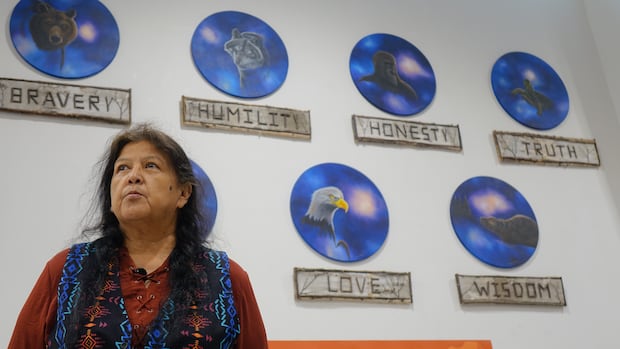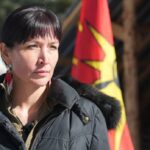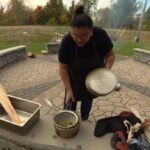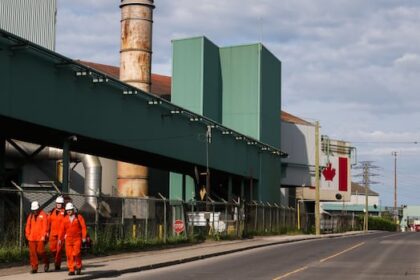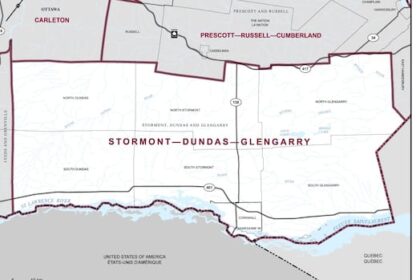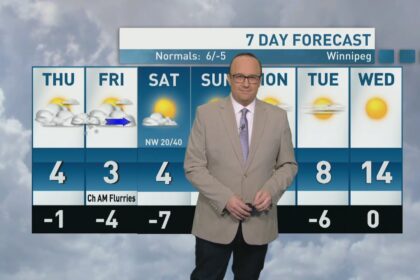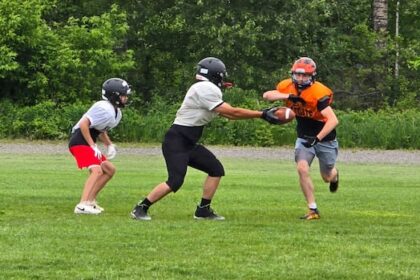Three people in Constance Lake First Nation had died in three days, when on Nov. 22, 2021, Chief Ramona Sutherland and her council declared a state of emergency.”We need help immediately,” wrote Sutherland in a news release.The community of 800, not far from the northern Ontario town of Hearst, was also seeing an increasing number of people getting sick with symptoms similar to pneumonia or flu, but which doctors told them was due to an illness many had never heard of.Speaking at a coroner’s inquest into the outbreak Friday, Sutherland testified how she tried to allay anxiety and fear in Constance Lake by issuing newsletters and holding daily live public meetings on social media.Sutherland said she started to learn about blastomycosis, how it was a caused by breathing in a spores released when decaying plant matter, possibly mixed with animal feces was disturbed.The burials of the people who died had to be halted, and new housing stopped, to avoid stirring up soil.Blastomycosis a mystery to many, sparking high anxiety”Anxiety was very high during the outbreak,” said Sutherland.”We didn’t know how long the incubation is in the lungs, but we learned it can sit in the lungs for as long as six months before flaring up, so it could even have been here before my term (as chief).”Anxiety was high because no one knew where the illness was coming from, she said.It was worse than the concern about COVID, said Sutherland, but trying to manage both tested people’s ability to cope.She said people had been told to get outside to avoid COVID infections, but now they were being told that being outside could expose them to a deadly and mysterious disease about which they knew nothing, except that people they loved were dying.Sutherland said there seemed to be threats coming from all directions.As a result, she began to hear reports that children were using drugs and talking about suicide, so she went to the school and visited every classroom to speak directly to the students.As well, she said she learned that some children were apprehended by child services because parents were not taking their medication for blastomycosis, which also caused the community a new level of distress.Anxiety was so heightened, she said some asked for the community to be evacuated, but Sutherland also worried about the risk of COVID outside the community, and because scientists told her the spores couldn’t survive cold temperatures, a full scale evacuation never happened.Many people from the community who became ill were being transported to larger hospitals for treatment, including around 11 children”People were being flown out of town and we didn’t know if they would come home again,” said SutherlandSutherland pushed for testing to find the source of the fungus and eventually got investigators to take more than 300 samples, which all came back negative.”We were told it wasn’t a normal practice to test for blastomycocis, becasue it’s just naturally occurring,” she said.A ridge of sawdust from an historic lumber camp sits untreated near the entrance to Constance Lake First Nation, causing concern about pollution (Kate Rutherford/CBC)Some of the sampling took place at a large sawdust pile from an historic lumber camp next to the community.”You’ll notice nothing grows there, no vegetation whatsoever, so I feel it’s full of chemicals,” said Sutherland. She blames the former sawmill, and a neighbouring trailer park, for pumping sewage into nearby Wilmot Lake, which also gets run-off frmo the sawdust pile. A ditch ran from that lake to the back of the property where 43-year-old Luke Moore lived, who was the first to die during the blasto outbreak. A map entered into evidence at the inquest showed three others who died lived in the same area, but testing failed to find signs of blastomycosis.”A lot of people were concerned becasue of mold in their houses so we requested inspections on the houses but nothing came out of it,” Sutherland said. “What did come out of it was that we were able to get some air ducts cleaned but that was the extent of the mold remediation.”People in Constance Lake First Nation relied on Notre Dame Hospital in Hearst for most of their health care (Kate Rutherford/CBC)Sutherland said the historical mistrust of some doctors and nurses at the Hearst hospital resurfaced again during the outbreak. “I’m not going to say all nurses are racist,” she said. “When we were young we played ball games with them and were friends with some of them. But every once in a while, it’s like a kick in the stomach. It’s the phrase, ‘you people.'” Sutherland said she often had to ask health officials to treat people respectfully and sensitively. There are still people in Constance Lake dealing with blastomycosis.Treatment includes taking very large pills, she said, which have to be taken for a year or more, and some people once they felt better, stopped taking them,.But the disease comes back, so people are still suffering, she said. It’s a minute, invisible killer- former Constance Lake First Nation Chief, Ramona SutherlandSutherland said she decided to testify at the inquest to honour those who had passed away and to show her love for the community.”We need to honour them, and give hope that we can get some recommendations that people can go the hospital without fear,” she said.”Five people are gone forever and they shouldn’t have, it was before their time and we still don’t know what happened.”Sutherland is urging more cultural awareness, and trauma-informed based training for staff at the Hearst hospital, as well as more staff and telemedicine capabilities at the clinic in the First Nation. She also wants to see more of the clean-up in the community, including the sawdust pile, the sewage in Wilmot Lake and the sawmill discharge in Constance Lake, which can’t be used for swimming. Sutherland fears that there could be another blastomycosis outbreak in her community.”It’s a minute, invisible killer,” she said.
Tuesday, 2 Dec 2025
Canada – The Illusion
Search
Have an existing account?
Sign In
© 2022 Foxiz News Network. Ruby Design Company. All Rights Reserved.
You May also Like
- More News:
- history
- Standing Bear Network
- John Gonzalez
- ᐊᔭᐦᑊ ayahp — It happened
- Creation
- Beneath the Water
- Olympic gold medal
- Jim Thorpe
- type O blood
- the bringer of life
- Raven
- Wás’agi
- NoiseCat
- 'Sugarcane'
- The rivers still sing
- ᑲᓂᐸᐏᐟ ᒪᐢᑿ
- ᐅᑳᐤ okâw — We remember
- ᐊᓂᓈᐯᐃᐧᐣ aninâpêwin — Truth
- This is what it means to be human.
- Nokoma


